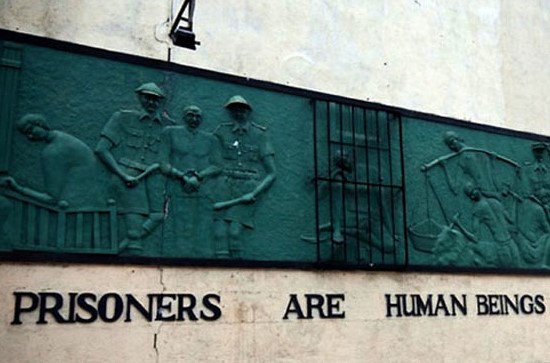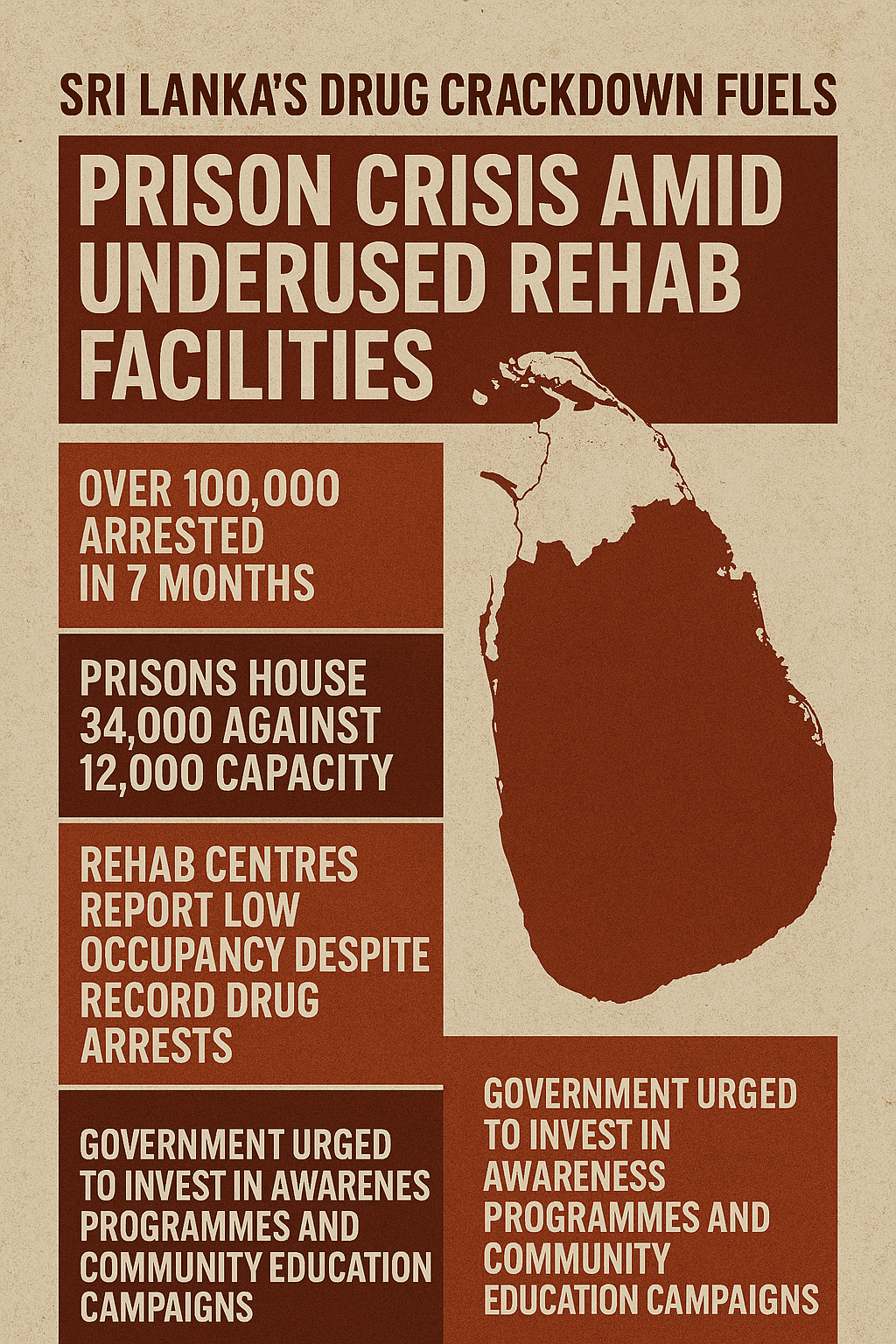Over 100,000 arrested in 7 months; prisons exceed triple capacity while rehabilitation centres remain underutilized
Sri Lanka is facing a deepening crisis in its criminal justice system, as intensified drug enforcement operations have led to a record number of arrests—while prisons buckle under extreme overcrowding and rehabilitation centres report low occupancy.
According to the Ministry of Public Security, more than 125,000 individuals have been arrested since January 1, 2025, with over 100,000 linked to drug-related offences. These figures reflect an aggressive crackdown on narcotics, but experts warn that the approach is unsustainable and risks worsening systemic issues.
Prisons at Breaking Point
Sri Lanka’s 36 prison facilities now house nearly 34,000 inmates, despite an official capacity of just 12,000. Commissioner of Prisons Jagath Weerasinghe confirmed that over 65% of inmates are incarcerated for drug-related offences, placing immense strain on infrastructure, staff, and basic services.
Among the incarcerated are approximately 400 foreign nationals, many of whom have raised concerns about inhumane conditions in overcrowded cells. The Commissioner acknowledged that the crisis is “out of control” and called for urgent reforms.
Drug Seizures and Arrests (Jan–Aug 2025)
| Substance | Quantity Seized | Arrests Made |
|---|---|---|
| Heroin | 930.1 kg | 37,251 |
| Methamphetamine (“Ice”) | 1,398 kg | 45,111 |
| Cannabis | 11,438 kg | 40,404 |
Despite these seizures, drug-related crimes show no signs of slowing down, prompting calls for a shift in strategy.
Prevention Over Punishment
Commissioner Weerasinghe urged the government to invest in awareness programmes and community education campaigns to reduce drug dependency. He emphasized the need for a “strong mechanism” to prevent addiction and educate the public about the dangers of narcotics.
“We must move beyond arrests and imprisonment. Prevention and rehabilitation are key,” he said.
Rehabilitation Centres: Underused and Underpromoted
The Bureau of Rehabilitation, under the Ministry of Justice and National Integration, operates three centres—in Kandakadu, Senapura, and Vavuniya—with a combined capacity to treat 1,120 individuals. Yet, only 638 people are currently undergoing rehabilitation, including 108 women.
| Centre | Capacity | Current Occupancy |
|---|---|---|
| Kandakadu | 500 | 280 |
| Senapura | 500 | 250 |
| Vavuniya (Women) | 120 | ~108 |
Rehabilitation programmes, conducted under court orders, typically last six months and aim to reintegrate individuals into society. The Bureau has called on the Ministry of Justice to increase referrals to rehab centres and reduce reliance on incarceration.
A Systemic Shift Needed
Sri Lanka’s drug enforcement strategy has exposed the limits of a punitive approach. With prisons operating at nearly three times their intended capacity, and rehabilitation centres running below half, experts say the country must urgently reorient its policies toward public health, education, and restorative justice.
(with the inputs from an article by DARSHANA SANJEEWA BALASURIYA in Daily Mirror.)

